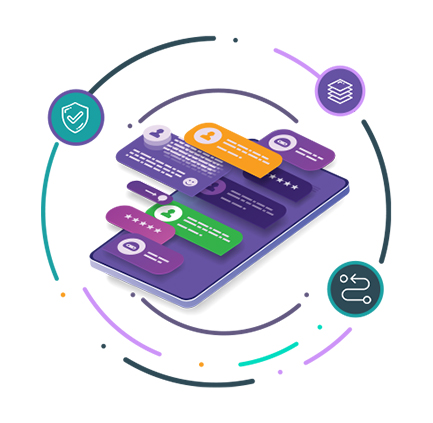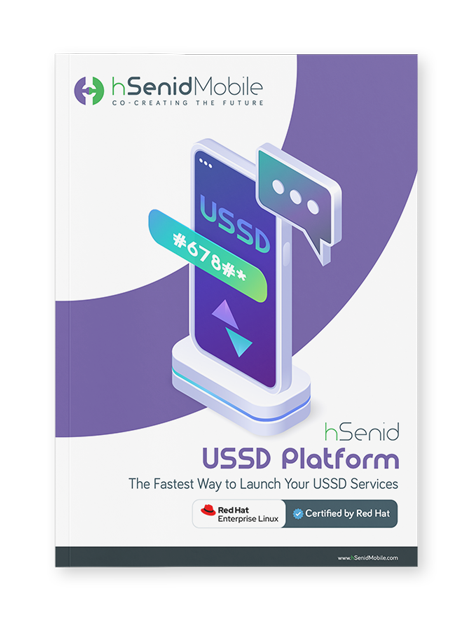In today’s digital economy, USSD gateway technology has quietly become a backbone for interactive mobile services, no internet needed. What began as a convenient way for users to top up airtime or check balances has now blossomed into a multifunctional platform supporting payments, surveys, voting, polling, engagement campaigns, and more. For telecom operators, this shift presents both challenges and opportunities. In this article, we explore how USSD gateways are evolving, with data to back up their enduring relevance, and why a telco-grade USSD solution is more critical than ever.
The Resilience of USSD in Payments
USSD (Unstructured Supplementary Service Data) is a session-based mobile protocol that enables real-time, two-way communication between a user’s phone and backend applications. Because it doesn’t rely on smartphones or mobile data, USSD is universally accessible, especially in under-connected or rural markets.
Payment statistics that underscore USSD’s stay
- In Africa more broadly, USSD-based transactions accounted for about 70% of instant payment channel activity by June 2023, even with growing competition from apps and QR codes.
- Some sources report that in African markets, as much as 94% of digital financial transactions still route via USSD in certain contexts.
These numbers confirm that even in the era of smartphone apps, USSD remains a dominant channel for payments, especially among underserved populations.
Beyond Money: Polls, Surveys, and Voting via USSD
As telcos seek new revenue streams and deeper customer engagement, the next frontier is turning USSD into a platform for structured interaction: polls, surveys, voting, public opinion collection, feedback, and market research.
Why polls and surveys via USSD make sense
- Universal reach
Because USSD works on all phones and doesn’t require data, even customers in remote zones can respond to polls or surveys. - Real-time response & session flow
USSD is session-based, enabling guided multi-step flows, skip logic, and branching menus, ideal for detailed surveys or multi-question polls. - Low cost & high scalability
Running millions of polling sessions via a USSD gateway is more cost-effective compared to SMS or IVR systems. - Integration with telco data
Operators can map responses with subscription, location, or usage segments (subject to privacy regulations) for targeted insights. - Trust & familiarity
Users already trust USSD for payments and queries; extending it to polling leverages that familiarity.
Use cases already in deployment
- Public sector & governance: Governments or regulators launch national polls or referenda via USSD to reach wider populations without requiring smartphones.
- Media and marketing: TV/radio shows invite audiences to vote or respond via USSD code menus; instant aggregation helps publishers tailor content.
- Telco-driven loyalty & engagement: Operators run surveys on service satisfaction, new offers, promos, user preferences, or even microgame polling (e.g. “Pick your next ringtone”).
- NGO & social campaigns: Health, agriculture, or education programs collect real-time feedback, attendance tracking, or support votes across communities.
The expansion from pure payments to engagement services positions the USSD gateway as a central “dialog engine” between a telco and its subscriber base.
Challenges and Mitigations
- Session time-outs & drop off: Long surveys may run into inactivity timeouts. Mitigation: support session resumption, automatic prompts, and optimized flow lengths.
- Menu complexity fatigue: Too many nested menus discourage users. Mitigation: minimize depth, use pagination, and intuitive UX design.
- Signaling load & congestion: Mass polling surges may strain the signaling network. Mitigation: architecture with signaling aggregation, queuing, and overload protection.
- Cost vs ROI balance: Running USSD at scale has costs (switching, capacity). Mitigation: flexible pricing, partnerships, or subsidized campaigns.
- Regulatory or political risk: Polls might be sensitive. Mitigation: built-in anonymization, compliance checks, and opt-in consent mechanisms.
The Future: USSD in a 5G / Hybrid World
USSD is not going away,even as networks evolve. Modern USSD gateway platforms now support operation over IMS and integrate with 4G/5G architectures, enabling coexistence with IP services.
Moreover, USSD can act as a fallback interface: even in hybrid app-driven ecosystems, USSD ensures universal reach when data connectivity is unavailable. It also complements app, web, and chat interfaces, providing a fail-safe for mission-critical interactions like two-factor authentication (2FA), OTPs, or fallback voting mechanisms.
As user expectations shift to real-time engagement, telcos can stitch USSD with push SMS, chatbots, IVR, and APIs, offering an omnichannel experience where USSD remains the low-end assured connector.
Why Telcos Should Own the USSD Engagement Layer
For operators, there is a strategic advantage in owning the USSD layer:
- It strengthens the telco’s role as a digital infrastructure provider, not just connectivity.
- It creates new revenue streams via polling, survey, ad campaigns, and enterprise engagement services.
- It deepens customer stickiness, as subscribers interact directly with operator-led services.
- It leverages existing network assets (signaling, SS7/MAP, Diameter/IMS) with relatively lower incremental cost.
- It positions the operator as a power center in the digital ecosystem, bridging finance, government, media, and enterprise.
In short: by elevating USSD beyond payments into polls and engagement, telcos can reclaim centrality in the digital economy of emerging markets.
Conclusion & hSenid USSD Suite Promotion
As the digital services landscape evolves, USSD gateway technology is transforming from a payments utility into a broader engagement platform,capable of powering polls, public surveys, voting drives, and intelligence gathering across wide populations. For telcos, the opportunity lies in turning this platform into a monetizable, strategic asset rather than a legacy cost center.
If your operator is looking for a robust, scalable, telco-grade solution, the hSenid USSD Suite is built for precisely this evolution. With support from 2G through 5G/IMS, drag-and-drop menu design, dynamic session handling, open APIs, analytics modules, and proven deployments, hSenid helps telcos deliver payments, polls, and engagement at scale.








